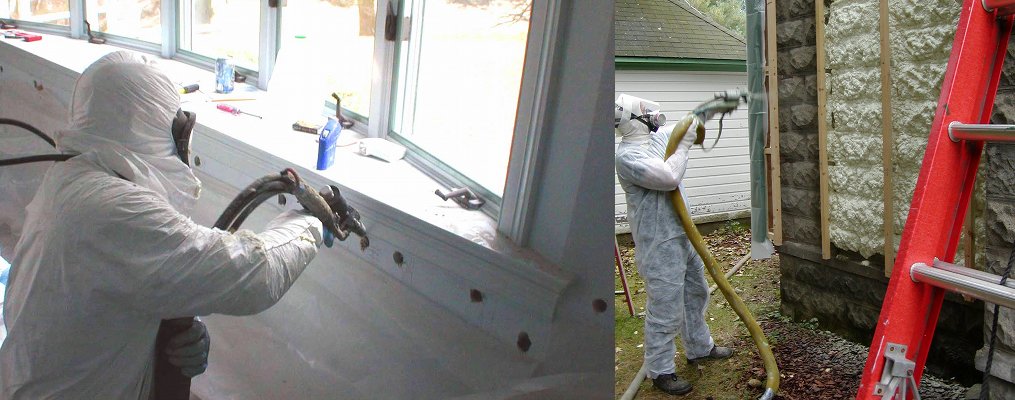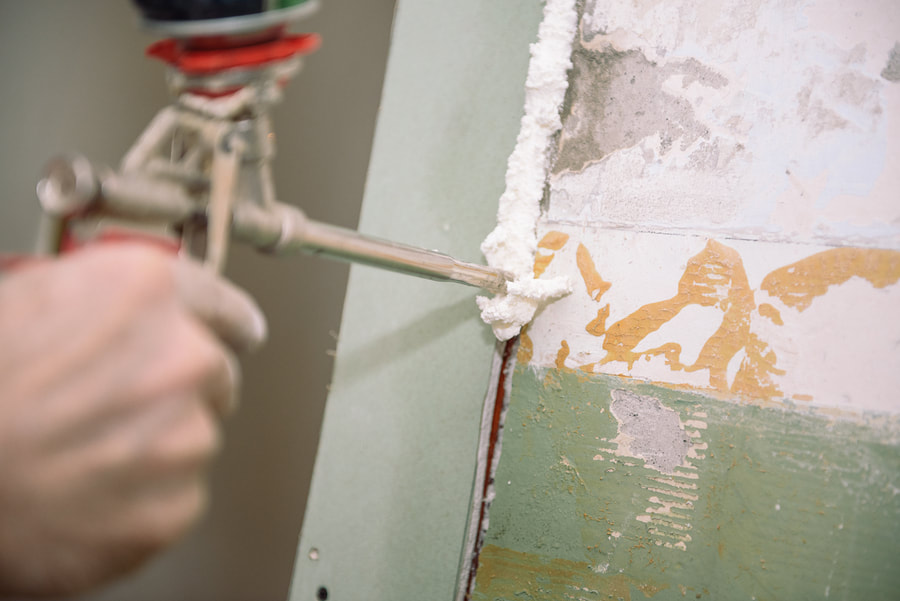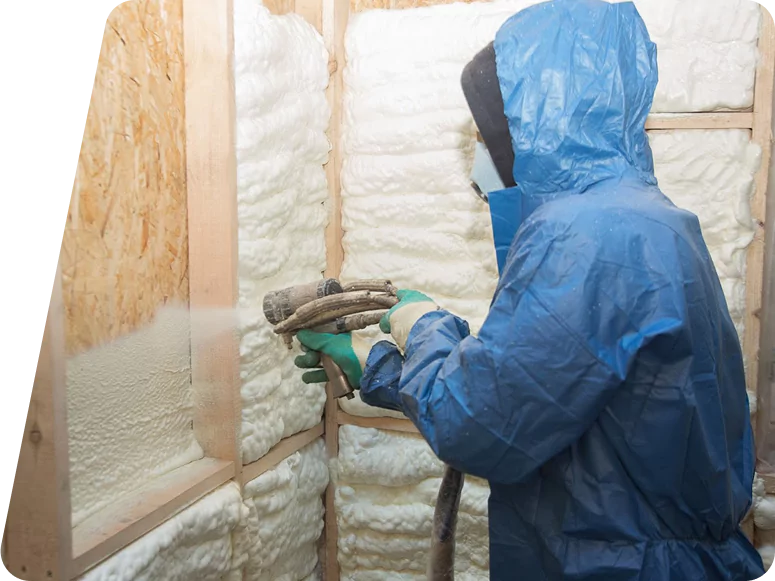
Unfortunately, many people use the term “spray foam” interchangeably with injection foam, which leads to some uncertainty. Expansion rates are one thing that can get confusing when using spray foam interchangeably with injection foam. That’s because spray foam expands and that amount differs depending on whether it’s open or closed-cell. Injection foam doesn’t expand at all.
Both foam products accomplish the same in that they create an air seal, which makes the structure more energy-efficient and comfortable.
The differences arise when it comes to how they are installed, the products, and how they function.
ArmorThane of Missouri has been selling and installing spray foam insulation in homes across the United States for more than 30 years. They know both products are superior to traditional insulation, and they also know the differences between the two. I was able to team up with them in writing on this topic. To educate homeowners, we will break down the differences and similarities between spray foam and injection foam insulation.
Injection Foam vs. Spray Foam Installation Process

Injection foam and spray foam insulation have the same insulating characteristics for the most part.
Still, the way they are installed is completely different.
The installation process is complex and different, but so are the materials installed and the tools used during installation.
Injection Foam Insulation Installation Process
Injection foam insulation is installed solely in the enclosed cavities of existing walls.
It may seem like the process will produce a huge mess in your home, but the injection foam can be installed from the outside in, which means there is no need to tear down any drywall.
Before installation begins, the injection foam insulation is mixed in the trailer. ArmorFoam injection foam is a three-part resin created to insulate enclosed cavities. As the resin blends with a foaming agent and water transform into the injection foam insulation, looking much like shaving cream inconsistency.
The old insulation in the walls, like fiberglass, doesn’t need to be removed before the installation. Now, if there is cellulose in the walls, the crews will likely remove as much of that as possible before injecting the foam. This is done to ensure the injection foam fills all of the holes and crevices in the wall.
Injection foam requires less prep time to prepare for the installation than spray foam. Because the crews work with whatever siding the home has, they drill the holes, inject the foam, replace the covering, and clean up. We’ll examine the spray foam prep work in just a moment.
The siding home can change the installation method.
A home with aluminum or vinyl siding requires a piece of the siding to be removed all throughout the home so a hole can be punctured into each stud cavity. The injection foam is mixed in the trailer and runs into a hose with a nozzle to the surface. The nozzle is placed inside the hole so the foam can be tapped inside the cavity.
Once the foam insulation is then inserted into each stud cavity, the holes are filled with a Styrofoam plug, and the siding is replaced.
Brick exteriors are handled somewhat differently.
Smaller holes are drilled through the mortar joints between each stud so the foam can be inserted. When the cavities are full, the holes are re-mortared.
Lastly, the wood siding process is a little odd and a little more difficult.
If the siding can be removed, then the same method for vinyl and aluminum is followed. If the siding can’t be removed, holes must be drilled through the wood siding. After the foam has been added, the holes are filled with wood plugs.

Spray Foam Insulation Installation Process
Spray foam insulation is installed in any open cavities.
This includes crawl spaces, attics, rim joists, and newly built homes’ open wall cavities. Spray foam can also be installed in pole barns as either open-cell or closed-cell material, but more on that soon.
Most spray foams are made when two liquids combine, causing a chemical response to form the polyurethane foam. The two liquids come from two different drums or containers labeled the “A” side and the “B” side.
The “A” side of a spray foam system is ordinarily made up of methylene diphenyl diisocyanate and polymeric methylene diphenyl diisocyanate. The “B” side is a blend of polyols, blowing agents, catalysts, flame retardants, and surfactants.
When the two barrels are added to one another, the reaction is creating the spray foam.
The main ingredients in the spray foam we use are water-blown and organic synthetic compounds derived from petroleum extracts.
Before introducing spray foam in an existing home, the old fiberglass or cellulose must be eliminated. This is done so the spray foam has a nice, clean space to adhere to and can fill the area where it is sprayed. Much like injection foam, this ensures every little crevice is filled, and no air can flow through it.
The prep for spray foam takes more time than the prep for injection foam. This is because furniture and other items should be relocated out of the area or moved to the room’s center. The crew will then wrap everything in plastic, including the floors and surfaces, to ensure no spray foam gets on them.

Now onto the installation.
When spray foam is implemented, two hoses are run from the trailer to the home. These two hoses connect to the spray foam gun, where the “A” side and “B” side are mixed in a small chamber.
The foam is then sprayed onto the cavity.
In most cases, open-cell spray foam is used in homes. This material expands up to 100 times its original size, so it gets into all the little spaces to produce an air seal.
Closed-cell spray foam is better suited for a pole barn’s exposed walls, but we will get more into the distinctions between the two in just a bit.
Injection Foam Insulation vs. Spray Foam Insulation R-Value and Air Sealing
Injection foam and spray foam insulation have the same air sealing qualities, while the R-Value can differ.
But R-Value doesn’t tell the whole story.
Let’s talk about that air seal first.
An air seal prevents the passage of air or vapor. Creating an air seal with foam insulation can work to block air movement into and out of your home, no matter if it is spray or injection foam.
Creating an air seal is important because around 30 percent of a home’s heating and cooling costs come from air leakage. The ability of spray foam and injection foam to fill all of the nooks and crannies in the attic, walls, crawl space, and rim joist can reduce energy loss in your home, which will reduce your monthly energy bills.
There are several other reasons why creating an air seal is good for your home. Do you or someone in your family suffer from allergies or asthma? Foam insulation’s air seal will keep those allergens outside, making your home healthier.
Another thing to consider is moisture in your home. The foam insulation air seal will keep moisture out of your home, especially in places like the crawl space, rim joist, and attic.
Now there is the R-Value of foam insulation.
Reducing insulation to a number doesn’t tell the whole story. It’s great to know the R-Value of your insulation, but it’s not the revered determiner for all things insulation that you may think. This is because foam insulation creates an air seal, which stops air movement.
But you want to know the numbers.
Open-cell spray foam insulation has an R-Value between R-3.6 and R-3.9 per inch. Closed-cell spray foam is R-6 to R-7 per inch. Once injection foam is in the wall, it lands at about an R-18 in total, but that varies depending on the cavity’s size.
The Difference Between Open Cell and Closed Cell Spray Foam
Spray foam can be either open or closed cell, while injection foam is a non-expanding open-cell foam.
While injection foam is an open-cell, it doesn’t expand because you wouldn’t want it to pressure the inside of the exterior wall.
Open-cell spray foam and closed cell spray foam have great insulation properties, but there are variations in how they are applied, their efficiency in homes compared to other structures, and how they work.
Open-cell tends to be lightweight, pliable, and easy to work with. Closed-cell is much more rigid and dense. This is why the open cell is better for homes because it can move and shift as the home settles, whereas closed-cell is nice and sturdy, making it a better fit for a pole barn’s exposed walls.
We already discussed the expansion rate of open-cell batteries, which is another reason they’re a great fit for homes. Closed-cell batteries don’t have that same expansion rate and are insignificant at best. This is why we recommend them for vans and tiny houses.
Next up– moisture permeability.
This is a crucial topic for many property owners. Open cell is inherently moisture-permeable; for example, a great open-cell spray foam keeps as much as 5 percent of its water weight.
Closed-cell spray foam, on the other hand, is 100 percent moisture impenetrable. That may seem like the best option, but this product conceals the leakage, and you do not desire that if your roof is dripping.
Foam Insulation for Your Home
The most significant difference between spray foam and injection foam insulation is how they are set up, which we discussed above.
Now that you know the distinctions between spray foam and injection foam, you may want to discover more about each’s advantages. We covered a few of those distinctions here. However, there is still a lot to discover.
If you’re interested in learning more about how foam insulation could provide incredible advantages for your insulation project, visit the Learning Center on ArmorThane’s site.





